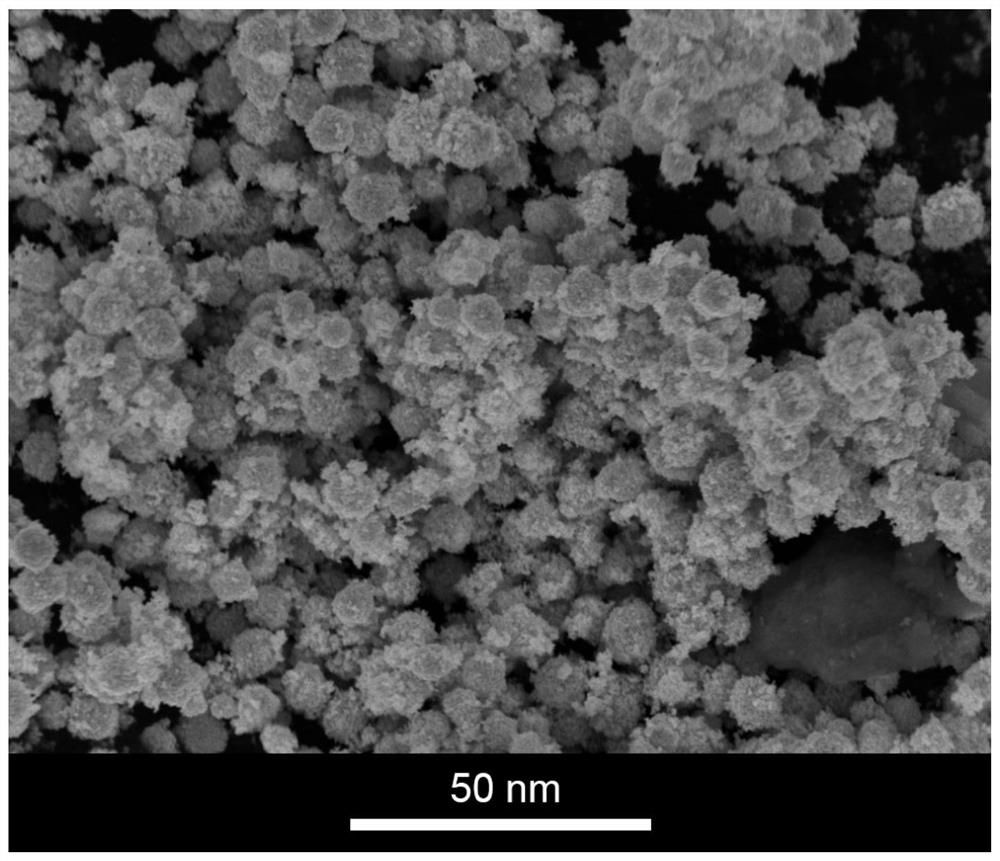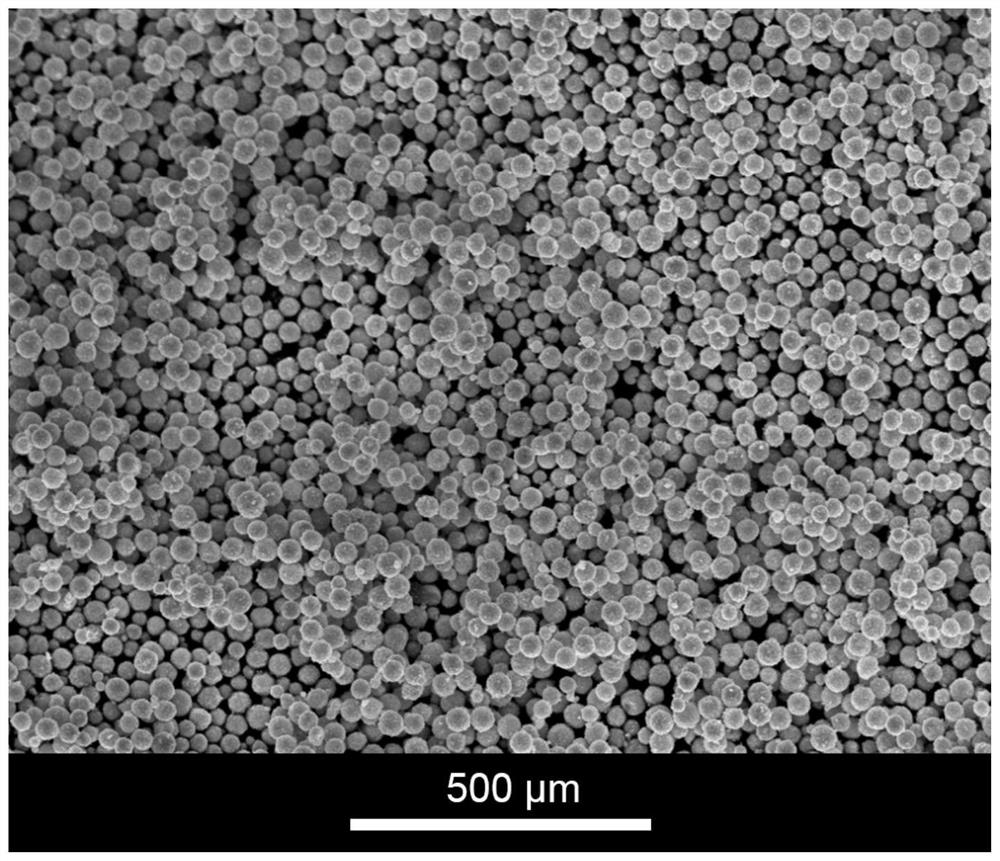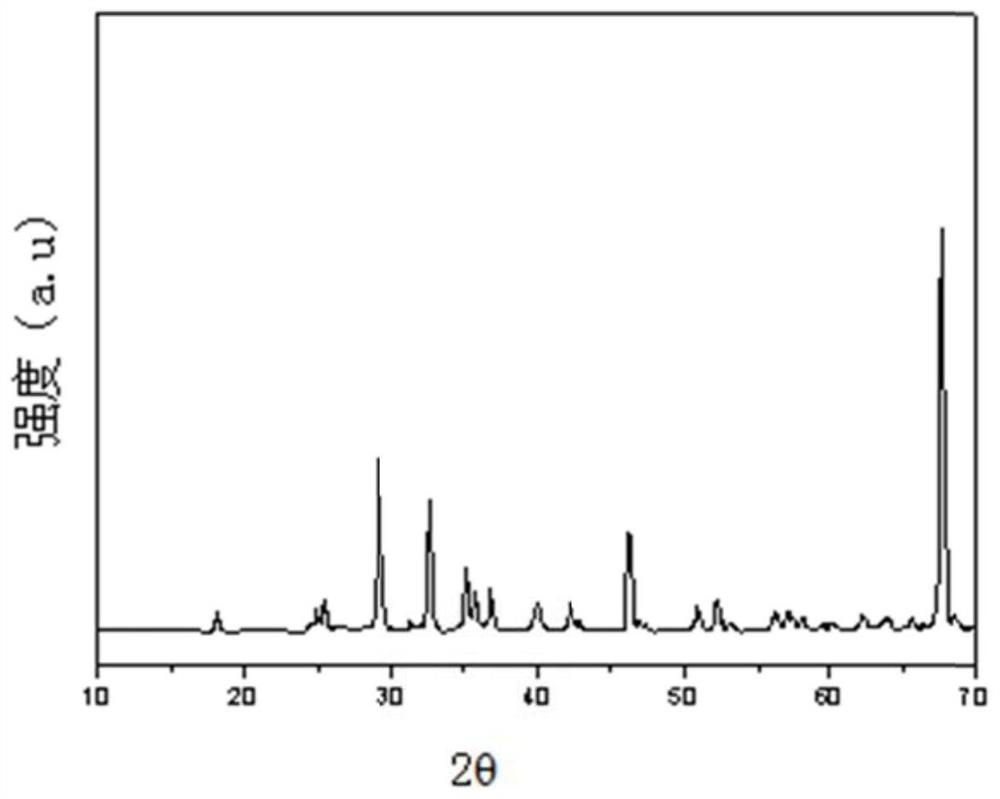Photocatalyst and application thereof in photocatalytic environment-friendly treatment of power battery
A photocatalyst and catalyst technology, which is applied in the direction of catalyst activation/preparation, physical/chemical process catalyst, chemical/physical process, etc. It can solve the problems of low degradation rate, inability to effectively recycle the diaphragm, and inability to treat the electrolyte alone.
- Summary
- Abstract
- Description
- Claims
- Application Information
AI Technical Summary
Problems solved by technology
Method used
Image
Examples
Embodiment 1
[0056] A photocatalyst is obtained by loading Ag-TaON on hollow glass microspheres; the mass ratio of Ag-TaON to hollow glass microspheres is 1:5.
[0057] A preparation method of a power battery photocatalyst, comprising the following steps:
[0058] (1) Push the corundum porcelain boat filled with tantalum foil into the middle heating section of the tube furnace, seal it with a flange, and flow at a flow rate of 2mL min at ambient temperature -1 Pure N 2 20min, then switch the gas path to flow rate 2mL min -1 Access to H 2 and N 2 mixture, H 2 The concentration is 5%, and at the same time, the temperature control program is turned on at 2°C·min -1 Raise the temperature to 250°C at a certain rate and keep it warm for 30 minutes;
[0059] (2) Lower the temperature to the ambient temperature, switch the gas path to a flow rate of 2mL min -1 Pure N 2 20min, then switch the gas path to flow rate 2mL min -1 Access O 2 and N 2 mixture, O 2 The concentration is 5%, and...
Embodiment 2
[0067] A photocatalyst is obtained by loading Ag-TaON on hollow glass microspheres; the mass ratio of Ag-TaON and hollow glass microspheres is 1:8.
[0068] A method for preparing a photocatalyst, comprising the steps of:
[0069] (1) Push the corundum porcelain boat filled with tantalum foil into the middle heating section of the tube furnace, seal it with a flange, and flow at a flow rate of 15mL min at ambient temperature -1 Inject pure Ar for 70 minutes, then switch the gas path to a flow rate of 15mL min -1 Access to H 2 and N 2 mixture, H 2 The concentration is 8%, and at the same time, the temperature control program is turned on at 5°C·min -1 Raise the temperature to 300°C at a certain rate and keep it warm for 90 minutes;
[0070] (2) Reduce the temperature to the ambient temperature, switch the gas path to a flow rate of 15mL min -1 And feed pure Ar within 70min, and then switch the gas circuit with a flow rate of 15mL min -1 Access O 2 and N 2 mixture, O 2...
Embodiment 3
[0078] A photocatalyst is obtained by loading Ag-TaON on hollow glass microspheres; the mass ratio of Ag-TaON and hollow glass microspheres is 1:8.
[0079] A method for preparing a photocatalyst, comprising the steps of:
[0080] (1) Push the corundum porcelain boat filled with tantalum foil into the middle heating section of the tube furnace, seal it with a flange, and flow at a flow rate of 15mL min at ambient temperature -1 Inject pure Ar for 70 minutes, then switch the gas path to a flow rate of 15mL min -1 Access to H 2 and N 2 mixture, H 2 The concentration is 8%, and at the same time, the temperature control program is turned on at 5°C·min -1 Raise the temperature to 300°C at a certain rate and keep it warm for 90 minutes;
[0081] (2) Reduce the temperature to the ambient temperature, switch the gas path to a flow rate of 15mL min -1 And feed pure Ar within 70min, and then switch the gas circuit with a flow rate of 15mL min -1 Access O 2 and N 2 mixture, O 2...
PUM
| Property | Measurement | Unit |
|---|---|---|
| Particle size | aaaaa | aaaaa |
Abstract
Description
Claims
Application Information
 Login to View More
Login to View More - R&D
- Intellectual Property
- Life Sciences
- Materials
- Tech Scout
- Unparalleled Data Quality
- Higher Quality Content
- 60% Fewer Hallucinations
Browse by: Latest US Patents, China's latest patents, Technical Efficacy Thesaurus, Application Domain, Technology Topic, Popular Technical Reports.
© 2025 PatSnap. All rights reserved.Legal|Privacy policy|Modern Slavery Act Transparency Statement|Sitemap|About US| Contact US: help@patsnap.com



